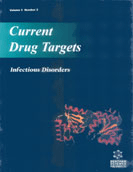Abstract
Chronic pain requires long-term therapy and controlled-release opioids are widely used for its management. One of the major causes of suboptimal therapy outcomes is poor adherence to prescribed therapy. Better adherence to treatment can be obtained by reducing dosing frequency. Oncedaily administrations were shown to be effective and well accepted by patients. The osmotic-controlled release oral delivery system (OROS®) is an advanced drug delivery technology that uses osmotic pressure as the driving force to deliver pharmacotherapy in many therapeutic areas. Over the past decades, different OROS® osmotic dosage forms have been studied to optimize extendedrelease oral administration by controlling the rate of drug release, providing different delivery profiles. OROS® hydromorphone has been recently introduced in clinical practice for treating patients with chronic cancer and noncancer pain. OROS® hydromorphone ensures a constant, monophasic delivery of hydromorphone over a 24-hour period. The pharmacokinetic profile of OROS® hydromorphone is minimally affected by food and alcohol. Doseconversion studies showed that patients with chronic pain could be switched easily from previous opioid therapy to OROS® hydromorphone, without loss of pain control. These studies support the clinical utility of the 5:1 ratio used for the conversion of oral morphine to oral OROS® hydromorphone. Oncedaily OROS® hydromorphone was shown to be effective in patients with chronic low back pain, and to provide similar pain relief to that of ER oxycodone in patients with moderate to severe osteoarthritis pain. OROS® products can result in an improved safety profile, more stable drug concentrations, uniform drug effects, and reduced dosing frequency.






















